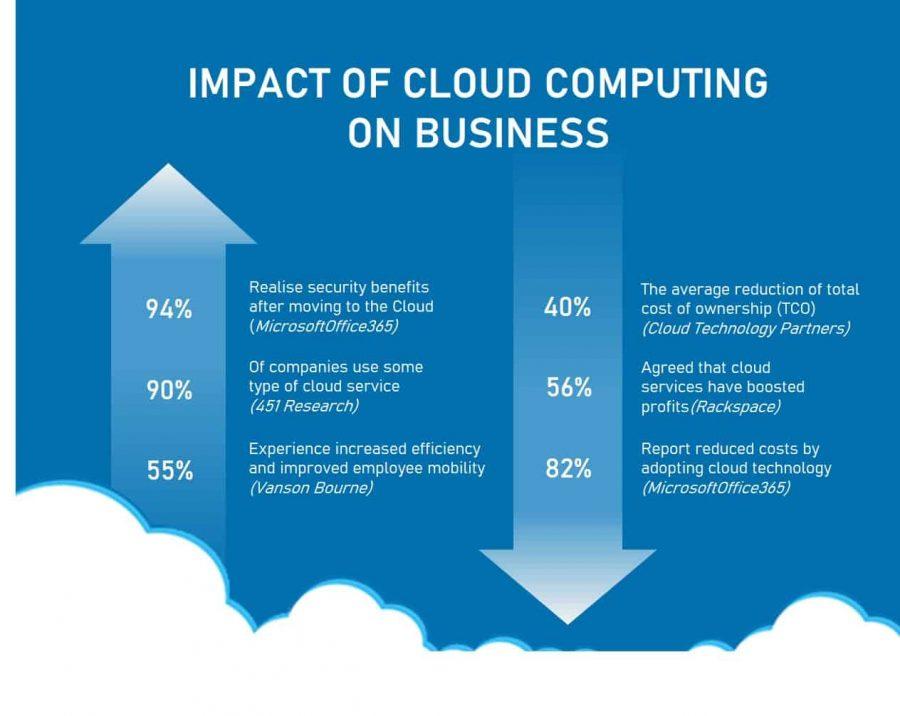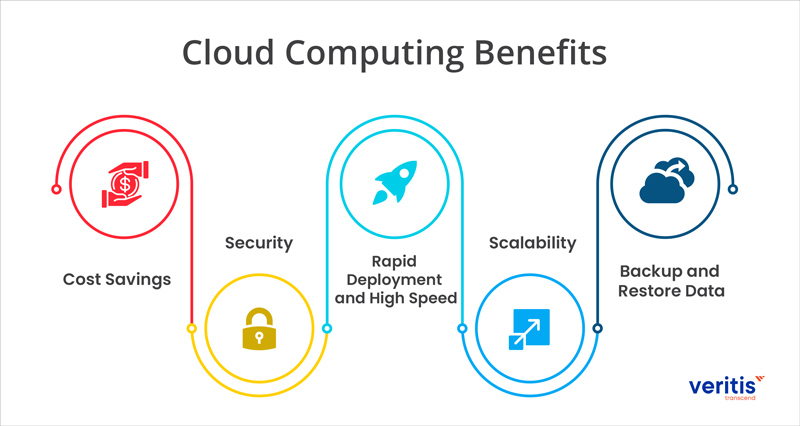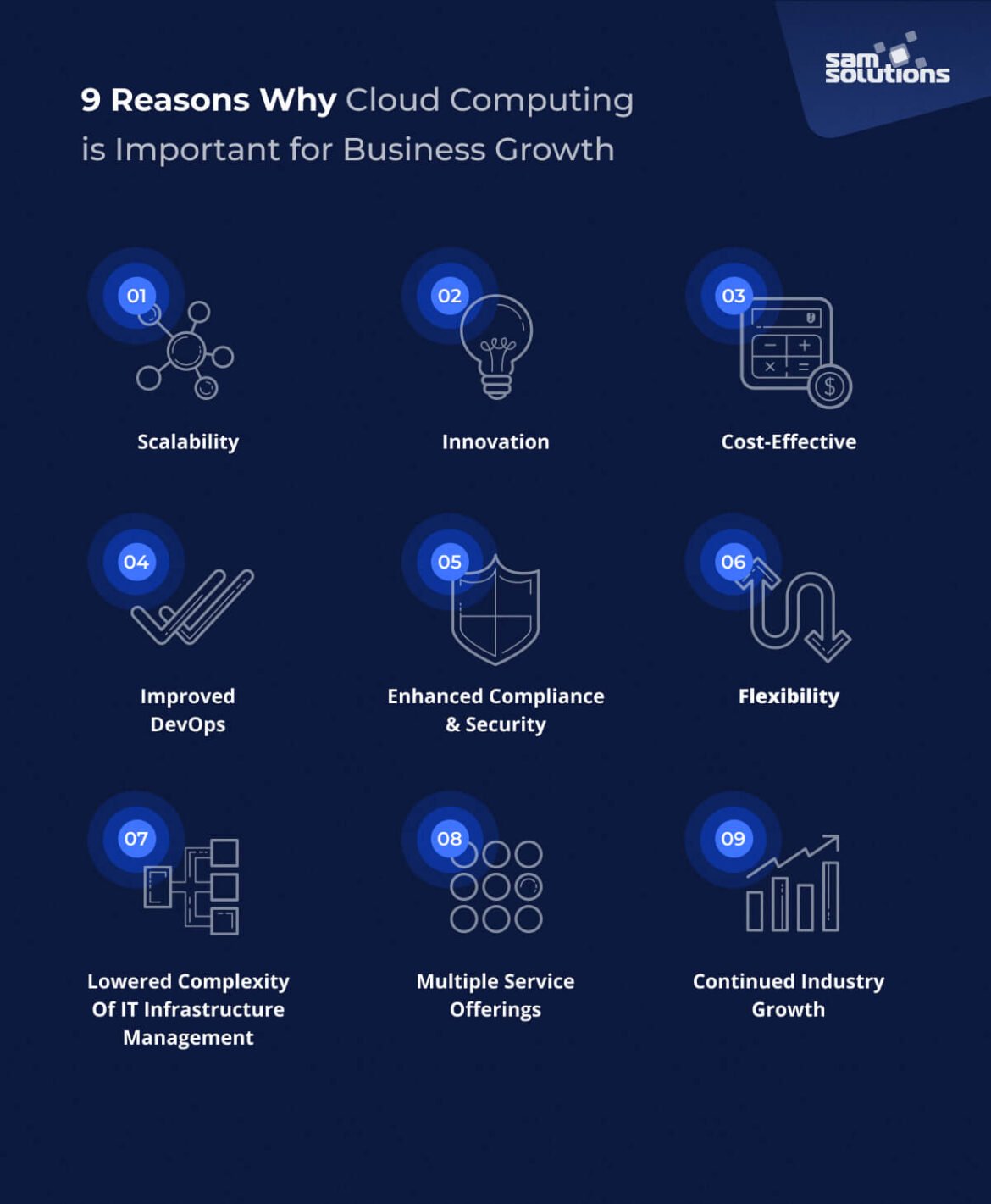
Introduction
Overview of Cloud Technology
In recent years, cloud technology has transformed the way businesses operate. Instead of relying solely on physical servers and storage, organizations now have the option to access resources over the internet. This shift towards cloud computing allows for greater efficiency, improved collaboration, and innovative solutions that were once not feasible for smaller enterprises. Think of it as having a virtual office space that you can access from anywhere, anytime.
To put it simply, cloud technology encompasses a variety of services such as:
- Data storage: No more limited hard drives; store and retrieve data as needed.
- Software as a Service (SaaS): Access applications over the internet instead of installing them on individual computers.
- Infrastructure as a Service (IaaS): Utilize scalable resources like servers without needing to maintain hardware.
Importance of Cloud Technology for Small Businesses
For small businesses, embracing cloud technology can be a game-changer. It allows them to operate more competitively, reducing overhead costs and enhancing agility.
Some vital points to consider include:
- Cost Savings: Lower IT costs as businesses don’t need to invest heavily in physical infrastructure.
- Accessibility: Work from anywhere as long as there’s an internet connection.
- Collaboration: Teams can collaborate in real-time using shared documents and tools.
Ultimately, cloud technology empowers small businesses to innovate, grow, and thrive in a digital-first world.

Benefits of Cloud Technology for Small Businesses
Cost Efficiency
One of the most compelling benefits of cloud technology for small businesses is cost efficiency. Traditional IT setups often involve hefty initial investments in hardware and software. Cloud solutions, on the other hand, follow a pay-as-you-go model, allowing businesses to pay only for the resources they use. This translates to significant savings.
- No Maintenance Costs: With cloud services, providers handle maintenance and updates, reducing the burden on in-house IT teams.
- Reduced Infrastructure Investment: Say goodbye to costly servers; utilize the cloud for storage and computing as needed.
Scalability
Scalability is another major advantage. As small businesses grow, their needs evolve, and cloud technology can accommodate that growth seamlessly. Imagine a business that suddenly experiences a surge in customers. With cloud services, they can easily upgrade their resources without the hassle of purchasing new hardware.
- On-Demand Resources: Scale up or down based on business requirements without interruption.
- Future Growth: Add functionalities like computing power as your business expands—not a headache but an opportunity.
Flexibility
Flexibility is key in today’s fast-paced business environment. Cloud technology allows employees to work from anywhere, fostering a more productive work-life balance. Teams can access files, applications, and communication tools from any device.
- Remote Work Capability: Perfect for supporting team members across locations, whether at home or in transit.
- Easier Collaboration: Real-time document editing and sharing enable seamless teamwork regardless of physical location.
Data Security
Finally, data security cannot be overlooked. Many small businesses might think they lack the resources for robust cybersecurity. However, cloud providers offer advanced security measures that often surpass what small businesses can implement on their own.
- Data Encryption: Protect sensitive information with top-tier encryption methods.
- Regular Backups: Keep data safe from loss due to hardware failures or other disasters.
In essence, by leveraging cloud technology, small businesses not only save costs but also enhance their adaptability, security, and overall operational efficiency.

Implementation of Cloud Technology in Small Businesses
Choosing the Right Cloud Service Provider
Once small businesses recognize the benefits of cloud technology, the next step is choosing the right cloud service provider (CSP). With numerous options available, it can feel overwhelming. What should you prioritize?
- Understand Your Needs: Assess what services you require—data storage, software applications, or more?
- Evaluate Security Features: Look for providers offering strong data encryption and compliance with regulations that apply to your industry.
- Check Customer Support: Ensure that the CSP is known for responsive customer service; downtime can be costly.
A personal anecdote: a startup owner I know spent weeks researching providers, ultimately choosing one with excellent support, which paid off during their migration phase.
Migration to the Cloud
Migration is the next critical step, and planning for it is essential. It’s not just a simple matter of shifting files; several aspects need to be considered:
- Develop a Migration Strategy: Prioritize what data and applications to move first.
- Set a Timeline: Allocate time for each step and inform your team about potential downtimes.
For example, one small business that transitioned smoothly dedicated a weekend for migration, avoiding disruptions during weekdays.
Training Employees on Cloud Tools
Finally, investing in training your employees on how to use cloud tools is crucial. Technology is only as effective as the people using it. To make onboarding effective:
- Offer Hands-On Workshops: Implement real-time training sessions where employees can practice using new tools.
- Create Resource Guides: Develop easy-to-follow documentation for common tasks.
Small businesses that prioritize training often report higher employee satisfaction and better use of tools. By ensuring that everyone is on the same page, companies can maximize the benefits of their new cloud solutions.

Challenges and Considerations
Data Privacy and Compliance
While cloud technology offers numerous benefits, it’s essential for small businesses to navigate potential challenges such as data privacy and compliance. Many companies handle sensitive information, and security breaches can lead to severe repercussions. Here’s what to consider:
- Understand Regulations: Familiarize yourself with regulations like GDPR or HIPAA that may apply to your business.
- Choose a Provider with Strong Security Protocols: Verify that your cloud service provider adheres to privacy standards and implements encryption and other protective measures.
A recent case I encountered involved a small healthcare firm that faced fines due to a data breach. They quickly realized the importance of partnering with a compliant CSP to safeguard client information.
Reliability and Downtime
Another consideration is the reliability of cloud services. While cloud providers often promise high uptime, outages can still occur, impacting business operations.
- Research Uptime Records: Look for providers that offer 99.9% uptime guarantees.
- Have a Backup Plan: Establish contingency procedures to mitigate issues during downtimes.
A friend who runs an e-commerce store once faced downtime during peak sales, costing them significant revenue. Now, they ensure they have a backup plan in place for quick recovery.
Integration with Existing Systems
Finally, integrating cloud solutions with existing systems can pose challenges. You might be using legacy software that’s critical to your operations, and ensuring compatibility is vital.
- Assess Compatibility Early: Evaluate how new cloud tools will interact with your current systems before migrating.
- Consider Using APIs: Application Programming Interfaces can help bridge gaps between software.
By addressing these challenges proactively, small businesses can effectively utilize cloud technology while minimizing potential setbacks.

Case Studies: How Small Businesses Have Leveraged Cloud Technology
Case Study 1: Company A
Let’s illustrate the advantages of cloud technology through Company A, a small graphic design firm. Before transitioning to the cloud, they struggled with collaboration—their team members often found it challenging to access files on a centralized server. After adopting a cloud-based project management tool, their workflow not only improved but skyrocketed in efficiency.
- Immediate Access to Files: Every team member could now access the latest design drafts from anywhere.
- Enhanced Collaboration: The ability to edit and comment in real-time allowed for quicker client turnarounds.
Within just six months, Company A reported a 30% increase in productivity and a 20% reduction in project turnaround time. The cloud not only streamlined their processes but fostered a more cohesive team environment.
Case Study 2: Company B
Another inspiring example is Company B, a retail store that needed to scale operations quickly. With the holiday season approaching, they turned to cloud technology for inventory management.
- Real-Time Inventory Tracking: By implementing a cloud-based system, they could monitor stock levels across multiple locations instantly.
- Data-Driven Insights: The software provided analytics on customer buying patterns, enabling more informed stocking decisions.
As a result, Company B experienced a 15% increase in sales compared to last year’s holiday season. Not only did they stay ahead of inventory issues, but they also delighted customers with availability.
These case studies showcase the tangible gains small businesses can achieve by embracing cloud technology, leading them toward greater efficiency and success.

Future Trends in Cloud Technology for Small Businesses
AI and Machine Learning Integration
As we look to the future, one significant trend in cloud technology is the integration of artificial intelligence (AI) and machine learning (ML). For small businesses, this development offers the potential for enhanced decision-making and automation.
- Predictive Analytics: AI tools analyze data trends to predict customer behavior, helping businesses tailor their marketing strategies more effectively.
- Automating Routine Tasks: Machine learning algorithms can streamline operations by automating repetitive tasks, freeing up time for employees to focus on creative work.
For example, a local bakery implemented an AI-driven inventory management system that predicted their busiest times and adjusted stock accordingly—leading to a 25% reduction in waste.
Edge Computing
Another emerging trend is edge computing, allowing data processing closer to the source rather than relying solely on centralized servers. This is crucial for small businesses dealing with real-time data.
- Faster Data Processing: Edge computing reduces latency, ensuring quicker responses for customer interactions and transactions.
- Increased Reliability: It minimizes dependency on internet connectivity, an essential factor for businesses in areas with unstable service.
A small logistics company began employing edge computing to track deliveries in real time, resulting in improved customer satisfaction rates.
Internet of Things (IoT) Connectivity
Lastly, the Internet of Things (IoT) is bridging the gap between physical and digital worlds. For small businesses, this means smarter operations and enhanced customer experiences.
- Smart Inventory Management: Connected devices can automatically track stock levels, alerting owners before they run out.
- Enhanced Customer Engagement: Businesses can gather data from customer interactions, using insights to personalize experiences.
For instance, a small coffee shop that used IoT sensors to monitor customer preferences reported a 15% increase in repeat visitors by tailoring their offerings based on collected data.
Embracing these future trends will empower small businesses to innovate, improve efficiency, and enhance customer relationships. The cloud technology landscape is evolving, and the possibilities are vast!

Conclusion
Summary of the Impact of Cloud Technology on Small Businesses
As we reflect on the journey through cloud technology, it’s clear that its impact on small businesses has been transformative. Cloud technology has provided these enterprises with unprecedented opportunities for growth, collaboration, and efficiency.
- Cost Savings: By eliminating the need for extensive physical infrastructure, small businesses can allocate funds toward innovation and customer service.
- Enhanced Flexibility and Scalability: Businesses can quickly adapt to changing market demands and access information from anywhere, increasing competitiveness.
- Improved Data Security: Advanced security measures from cloud service providers ensure that sensitive information is more secure than traditional methods.
For small businesses, adopting cloud technology is not just about keeping up; it’s about thriving in a rapidly changing landscape.
Recommendations for Small Businesses Considering Cloud Adoption
If you’re a small business considering this transition, here are a few recommendations to ensure a smooth and effective shift:
- Assess Your Needs: Determine what specific services and features are most vital for your operation.
- Start Small: Consider migrating a single application or department to the cloud before launching a full-scale transition.
- Invest in Training: Ensure your team is comfortable with new tools through proper training and support.
In embracing cloud technology, small businesses can position themselves for success, turning challenges into opportunities for growth and increased customer engagement. Now is the time to take the leap!

